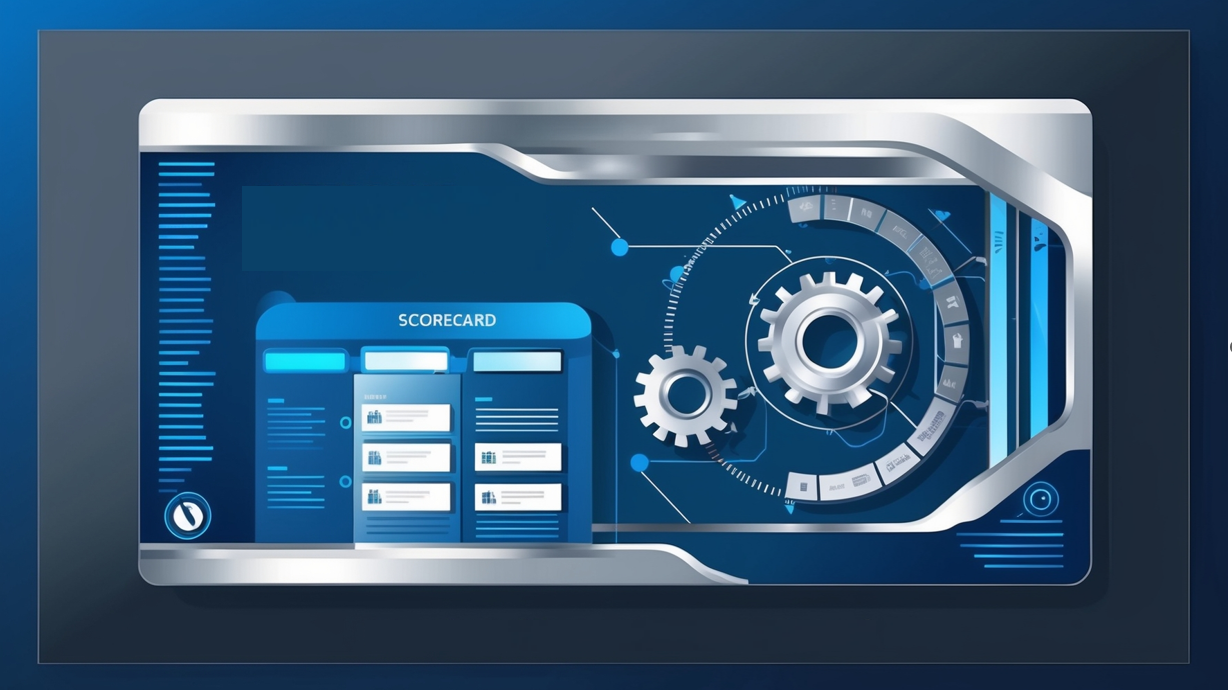This research paper introduces a framework for enterprise architecture assessment - based upon COBIT and TOGAF - to evaluate the realization of business results from the program. The framework is applied in a real-world case study, and results and lessons learned are discussed.
In an increasingly digital world, organizations across the globe are tasked with the challenge of ensuring their enterprise architecture effectively supports their operational and strategic goals. Enterprise architecture (EA), the comprehensive layout of an organization's IT infrastructure, business processes, and system interactions, forms the backbone of the company's digital ecosystem. However, assessing and optimizing EA's effectiveness can be complex and daunting, often requiring a systematic and structured approach.
The challenge lies in the need for a reliable and effective method to assess the performance and alignment of enterprise architecture with business objectives. Traditional methods often fail to provide a comprehensive picture, missing key efficiency, scalability, and effectiveness indicators. These outdated approaches can result in missed opportunities, increased costs, and an inability to realize strategic business goals. This signifies a critical need for an enhanced framework that draws upon recognized standards to evaluate EA effectively.
Responding to this need, researchers have developed an innovative EA Assessment Scorecard, leveraging widely recognized frameworks - COBIT (Control Objectives for Information and Related Technologies) and TOGAF (The Open Group Architecture Framework). This new framework provides a more thorough and nuanced analysis of EA, effectively evaluating how well the architecture realizes business objectives.
COBIT's comprehensive control objectives enable an organization to assess its IT management and governance's effectiveness, while TOGAF provides a methodology for designing, planning, implementing, and managing EA. Integrating these two frameworks within the EA Assessment Scorecard offers a systematic, structured, and holistic approach to evaluating enterprise architecture.
In a real-world case study, this approach was implemented and thoroughly evaluated. The results underscored the scorecard's efficacy, with organizations realizing improved alignment between their EA and business goals. Moreover, lessons learned from the case study provided further insights into the framework's practical applications and potential enhancements.
In conclusion, the Enterprise Architecture Assessment Scorecard, built on the robust principles of COBIT and TOGAF, provides a comprehensive and effective solution for organizations seeking to assess and optimize their enterprise architecture in alignment with their business objectives. This innovative tool offers a clear pathway for companies to unlock the potential of their EA, driving growth, competitiveness, and digital transformation success.
Chief Information Officers (CIOs) can use the learnings from this guide to address many real-world problems they face in managing and optimizing enterprise architecture. Here are some ways they can apply this framework:
- Aligning IT with Business Objectives: By utilizing the EA Assessment Scorecard, CIOs can more effectively align their IT infrastructure and strategies with broader business goals. This framework provides the tools to assess how well the current architecture supports the organization's strategic vision and facilitates necessary adjustments.
- Improving IT Governance: Applying the COBIT framework within the scorecard allows for an in-depth evaluation of the organization's IT governance. The CIO can identify potential weaknesses and implement measures to improve risk management, control, and compliance.
- Optimizing Resource Allocation: Through a comprehensive evaluation of enterprise architecture, CIOs can identify areas of inefficiency or over-resourcing. This knowledge allows for better decision-making regarding IT investments, potentially leading to significant cost savings and more efficient use of resources.
- Facilitating Digital Transformation: As companies increasingly undertake digital transformation initiatives, understanding and optimizing enterprise architecture is critical. The EA Assessment Scorecard can guide CIOs in structuring and managing these efforts, ensuring that new technologies and processes are effectively integrated into the existing architecture.
- Enhancing Communication: The scorecard can also serve as a communication tool, helping to clarify the role and value of enterprise architecture within the organization. It allows CIOs to demonstrate how EA directly contributes to achieving business objectives, fostering better understanding and collaboration between IT and other business units.
In applying the insights gained from the EA Assessment Scorecard, CIOs can navigate their organizations through complex IT challenges and towards more effective and aligned enterprise architecture. The focus on both COBIT and TOGAF ensures a robust and comprehensive approach, accommodating a wide array of real-world scenarios and organizational needs. Ultimately, this leads to a more strategic IT use as a business success driver.

